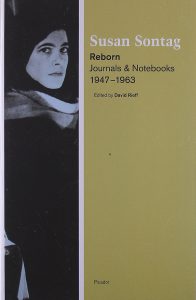By Colorado Review Associate Editor Megan Clark
I once stood outside the Irish premiere of a movie I’d already seen twice in the United States, waiting for the lead actor, Daniel Day-Lewis, to walk out the door. It was early January in Dublin and it was cold and raining off and on, and the general refusal by everyone around me to acknowledge this rain shamed me out of opening my umbrella. By the time the crowd of starlets and other important people began pouring out the front door, I had been waiting for an hour and a half and was incredibly cold and thoroughly damp. Daniel Day-Lewis snuck out the back.
The motivation behind all this was, of course, obsession. I am obsessed with Daniel Day-Lewis, vocally and committedly. So much so that, when he announced his retirement in 2017, my friends received texts from their friends inquiring—only half-jokingly—about my well-being.
Obsession, we’re told, is unhealthy at worst, embarrassing at best. To write about one’s obsessions, to air them publicly, is particularly tacky—or so we seem to believe.
A peer—and wonderful writer—whose essays often explore his time in the military says before reading his work, “I bet you can guess what this is going to be about.” A friend tells me she’s constantly writing about car accidents. When I tell people about a project I’m working on—a novel about religion, sexuality, and politics set in 1980s Northern Ireland—I follow up with, “I know. It’s very me.” An apology of sorts.
This apparent embarrassment is what made me want to discuss obsession and its place in our writing. However, after completing an internet search for “writers AND obsession” and seeing the number of results, I’m beginning to wonder if obsession is actually in need of a defender. Last year, the Iowa Summer Writing Festival offered a poetry workshop dedicated entirely to the topic of obsession—exploring obsession in the work of other poets and learning how to write toward it in one’s own practice. In her book Writing Down the Bones: Freeing the Writer Within, Natalie Goldberg counsels writers to periodically list their obsessions. She describes writers’ obsessions as “things that haunt them; things they can’t forget; stories they carry in their bodies waiting to be released.” According to Susan Sontag:
The writer must be four people:
1) The nut, the obsédé
2) The moron
3) The stylist
4) The critic
One and two—obsession and idiocy—she writes, “are the most important.”
So, if none other than Susan Sontag has signed off on obsession, why are my friends and I still so concerned? Honestly, I’m not sure I have an answer. It must have something to do with the constant quest for originality, the quest to be different not only from other writers, but also from past versions of ourselves. To keep hitting refresh.
For me, writing toward my obsessions is not so much writing what I know but writing what I want to know. It’s following my obsession down a rabbit hole of inquiry and then sharing my discoveries with others, hoping they too might be interested.
In the upcoming Fall 2018 issue of Colorado Review, Julie Marie Wade writes of butterflies. She writes of far more, but to reduce her  essay “Meditation 38” to a one-sentence “this is what it’s about” would be a disservice. Again and again, butterflies appear in the essay’s field of vision—as a poem, a childhood memory, a tickle in the throat. As I read “Meditation 38,” I kept thinking of obsession. To conjure up these butterflies with such beauty and clarity, obsession—or fascination—must have been required. Even if obsession was not the impetus behind the essay’s creation, surely the creation of the essay has fueled a certain obsession. Or, perhaps I am projecting. All I know is, since reading this essay, my thoughts have been populated by butterflies—by Jodie Foster in The Silence of the Lambs poster, by the shape of the thyroid, by “thin, white bandages that open like wings.” An obsession has been generated, and so the cycle begins again.
essay “Meditation 38” to a one-sentence “this is what it’s about” would be a disservice. Again and again, butterflies appear in the essay’s field of vision—as a poem, a childhood memory, a tickle in the throat. As I read “Meditation 38,” I kept thinking of obsession. To conjure up these butterflies with such beauty and clarity, obsession—or fascination—must have been required. Even if obsession was not the impetus behind the essay’s creation, surely the creation of the essay has fueled a certain obsession. Or, perhaps I am projecting. All I know is, since reading this essay, my thoughts have been populated by butterflies—by Jodie Foster in The Silence of the Lambs poster, by the shape of the thyroid, by “thin, white bandages that open like wings.” An obsession has been generated, and so the cycle begins again.
